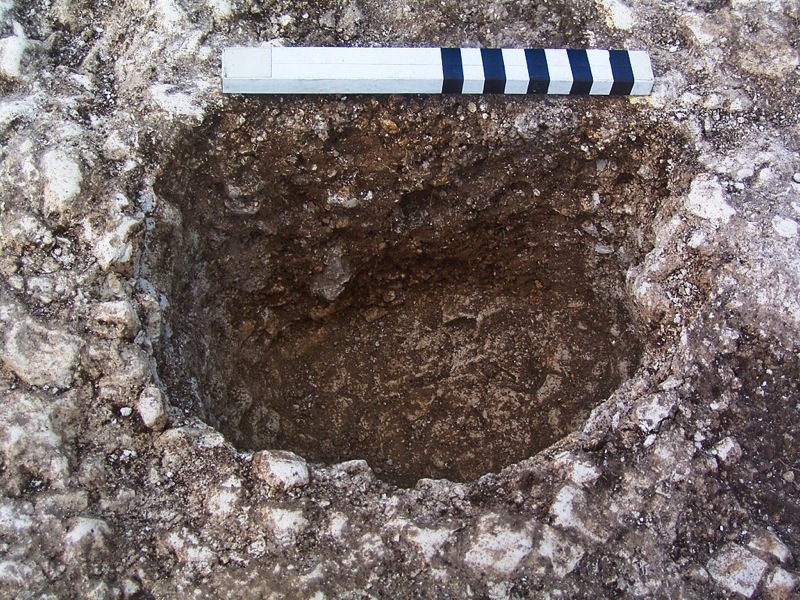Last night it rained and arriving at site this morning we found a bruised sky and sodden ground. We began the day, as all good archaeological digs start, with a nice cup of tea. By 9.00 am the clouds had cleared and a milky sunshine bathed the site-hut and buildings. After a talk about the day's activities from site director Chris Ellis, we walked up to the site.
Today, after yesterday's cleaning, we began to dig. Each excavator took a feature and excavated half of the material within it to leave a vertical face, or section, through the centre. This shows all of the layers that have formed within that feature and tells us how the hole has filled in. At the end of the dig we will be looking not only for features that seem to form part of shapes - such as roundhouses or square structures - but also for features that have filled up in a similar way. This may indicate that they are contemporary and therefore related.

In the afternoon training-dig favourite Matt Leivers from Wessex Archaeology came to give us the first of this week's workshops. Matt spoke about worked flint and how it has been used in the past. Struck flint can be very difficult to recognise so talks like this are invaluable to our excavators.
At 3pm it was back up to the site to continue excavation. Progress today has been incredible. Most people have finished excavating their feature and begun the process of recording it. Archaeology is by its very nature a destructive process, because by removing material from features we alter them. Good records are therefore most important.